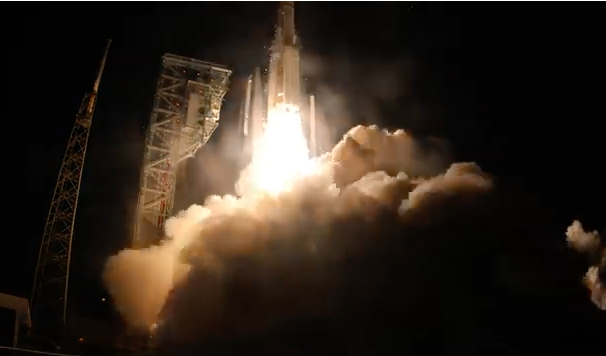

Today's final sendoff of the Delta IV Medium+ (4,2) configuration vehicle successfully launched the U.S. Air Force Space and Missile Systems Center's Global Positioning System III SV02 Magellan satellite.
The United Launch Alliance Delta IV Medium+ (4,2) rocket lifted off on time at 9:06 a.m. EDT (1306 UTC) carrying the GPS III SV02 navigation satellite for the U.S. Air Force Space and Missile Systems Center from Cape Canaveral, Florida.
“As we seek to modernize GPS, we bid farewell and thank you to a launch vehicle with an excellent track record in the Delta IV (4,2). We look forward to this final, successful launch for this ULA mainstay,” said Lt. Gen. John F. Thompson, Space and Missile Systems Center commander and Air Force program executive officer for Space. “The GPS program is a prime example of SMC 2.0 as we continue to modernize our fleet at EPIC Speed.”
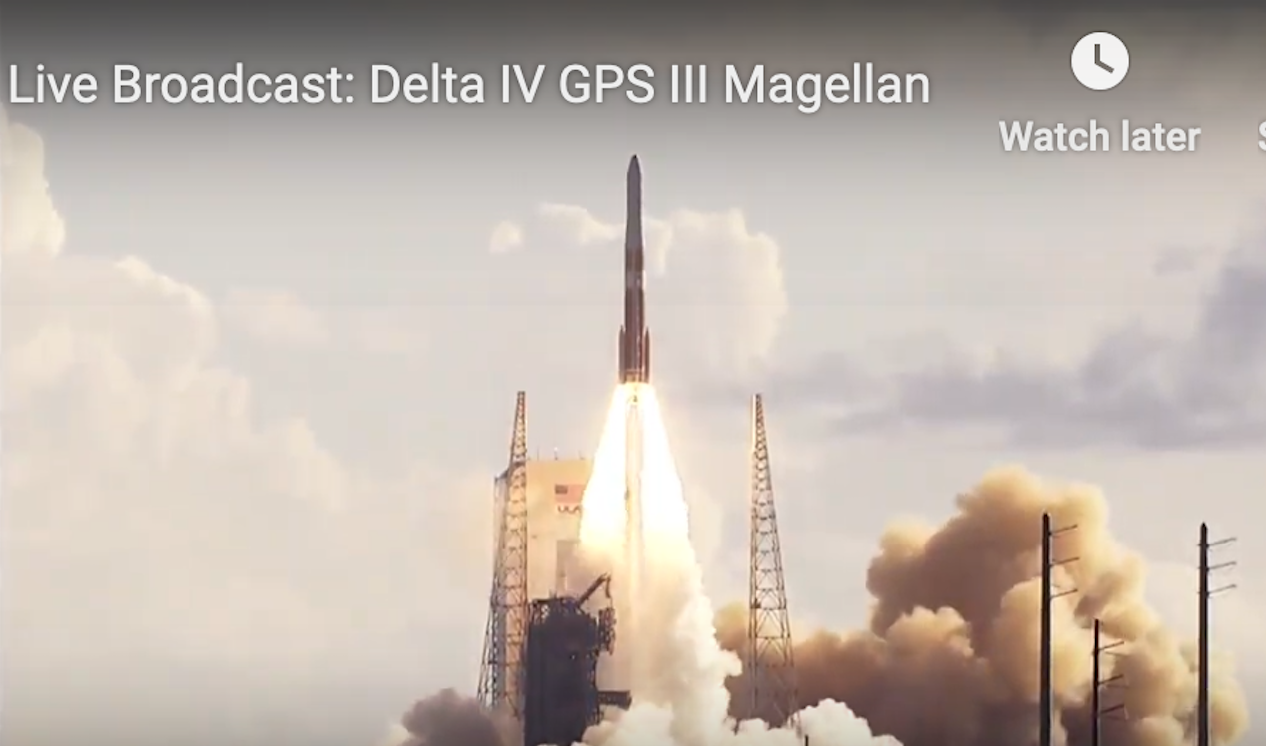
United Launch Alliance Successfully Launches GPS III Satellite for
U.S. Air Force Space and Missile Systems Center
Cape Canaveral Air Force Station, Florida, (Augustust 22, 2019) – A United Launch Alliance (ULA) Delta IV rocket carrying the second Global Positioning System III (GPS III) satellite, designated Magellan, for the U.S. Air Force Space and Missile Systems Center lifted off from Space Launch Complex-37 on Augustust 22 at 9:06 a.m. EDT. This mission marked the 29th and final flight of the Delta IV Medium rocket and the 73rd GPS launch by a ULA or heritage vehicle.
“Thank you to the team and our mission partners for the tremendous teamwork as we processed and launched this critical asset, providing advanced capabilities for warfighters, civil users, and humankind across the globe,” said Gary Wentz, ULA vice president of Government and Commercial Programs. “We are proud of the strong legacy of the Delta IV Medium program, and look forward to the future with our purpose-built Vulcan Centaur.”
The GPS III system, built by Lockheed Martin, represents the next step in modernization of the worldwide navigation network with a new generation of advanced satellites offering improved accuracy, better anti-jam resiliency and a new signal for civil users.
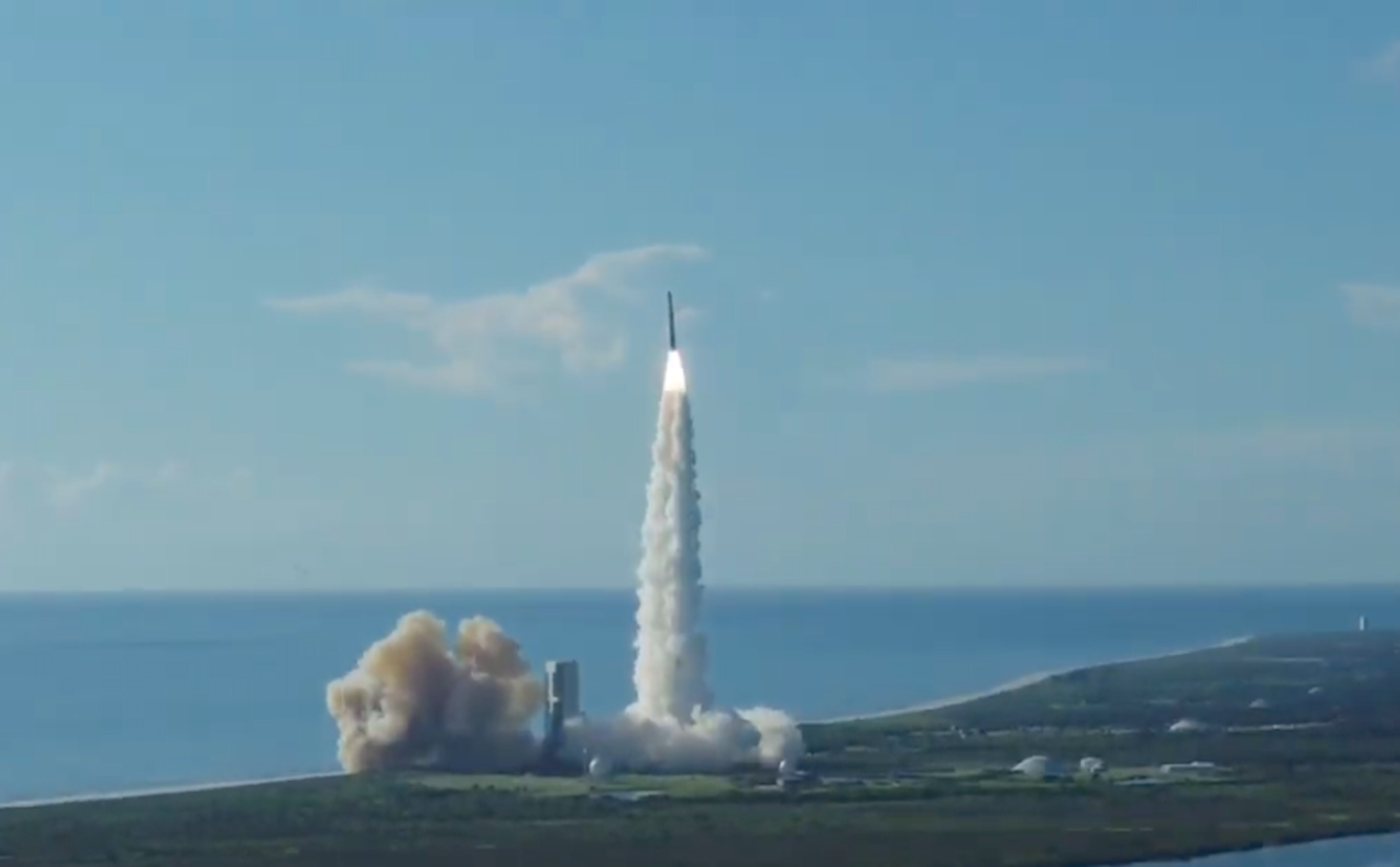
This mission launched aboard a Delta IV Medium+ (4,2) configuration vehicle, which included a 4-meter Payload Fairing and two Northrop Grumman solid rocket motors. The common booster core for Delta IV was powered by the RS-68A engine, and the Delta Cryogenic Second Stage was powered by the RL10B-2 engine, both supplied by Aerojet Rocketdyne.
ULA’s next launch is Boeing’s CST-100 Starliner, Orbital Flight Test, aboard an Atlas V rocket from Space Launch Complex-41 at Cape Canaveral Air Force Station, Fla.
ULA maintains a track record of 100 percent mission success with 135 successful launches.
With more than a century of combined heritage, ULA is the world’s most experienced and reliable launch service provider. ULA has successfully delivered more than 130 satellites to orbit that provide Earth observation capabilities, enable global communications, unlock the mysteries of our solar system, and support life-saving technology.
End
The Launch Timeline
Today's nine-hour, night owl countdown started at 12 midnight EDT...
under the guidance of ULA Launch Conductor Dillon Rice. The rocket was powered up and underwent standard day-of-launch testing while crews retracted the Mobile Service Tower and configured the launch pad. The "go" for fueling was given by ULA Launch Director Paul Aragon at 4:13 a.m. Tanking operations were successfully performed as 165,000 gallons of liquid oxygen and liquid hydrogen were placed into the rocket's tanks. The clear to launch was given at 9 a.m. EDT by Air Force Mission Director Col. Shane Clark.
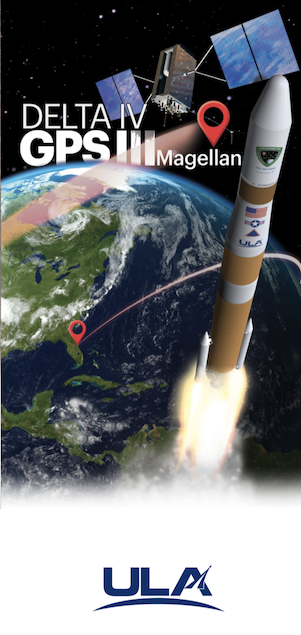
Following the first stage of flight, the Delta Cryogenic Second Stage performed an initial burn that achieved a parking orbit.
They're now in the midst of a 53-minute coast to reach the desired point in space where second stage will perform another burn to put the satellite into a transfer orbit to reach a slot in the GPS network.
Deployment of the payload to complete this launch is expected at T+plus 1 hour, 55 minutes.
Noted below is the timeline beginning with just minutes before the launch.
August 22 06:05 — T-minus 55 seconds and counting. Computers have verified that the RS-68A main engine is ready for ignition and the Range Operations Commander confirms that the Air Force's Eastern Range at the Cape is in a "green" condition for launch.
August 22 06:06 — Liftoff!
August 22 06:06 — T+plus 30 seconds. The Delta IV has performed pitch, yaw and roll maneuvers off the launch pad to obtain the proper northeast trajectory, en route to a 55-degree, 11,000-nautical-mile-high transfer orbit to intercept the GPS constellation.
August 22 06:07 — T+plus 60 seconds into today's launch to place the second GPS III spacecraft into orbit to provide improved accuracy, better anti-jam resiliency and a new signal for civil users of the navigation network.
With the main engine at full throttle and both solid rocket motors burning, the vehicle has already broken through the sound barrier to go supersonic and passed the period of maximum aerodynamic stresses in the lower atmosphere.
August 22 06:07 — T+plus 1 minute, 45 seconds. Solid rocket motor burnout and separation is confirmed. Both SRMs completed their job augmenting liftoff thrust, then jettisoned to complete the final use of 60-inch-diameter, Northrop Grumman-made Graphite Epoxy Motors, or GEM-60s, by Delta IV. There were 68 GEM-60s launched on the Delta IV program since 2002.
The RS-68A main engine continues operating in the full power mode.
August 22 06:08 — T+plus 2 minutes. Delta IV has burned more than 350,000 pounds of fuel and now weighs only half of what it did at liftoff. The rocket will triple its velocity by the time of staging in less than two-and-a-half minutes.
August 22 06:09 — T+plus 2 minutes, 30 seconds. Delta IV is traveling faster than Mach 5 now. The second stage control system is being readied by opening the hydrazine supply valve.
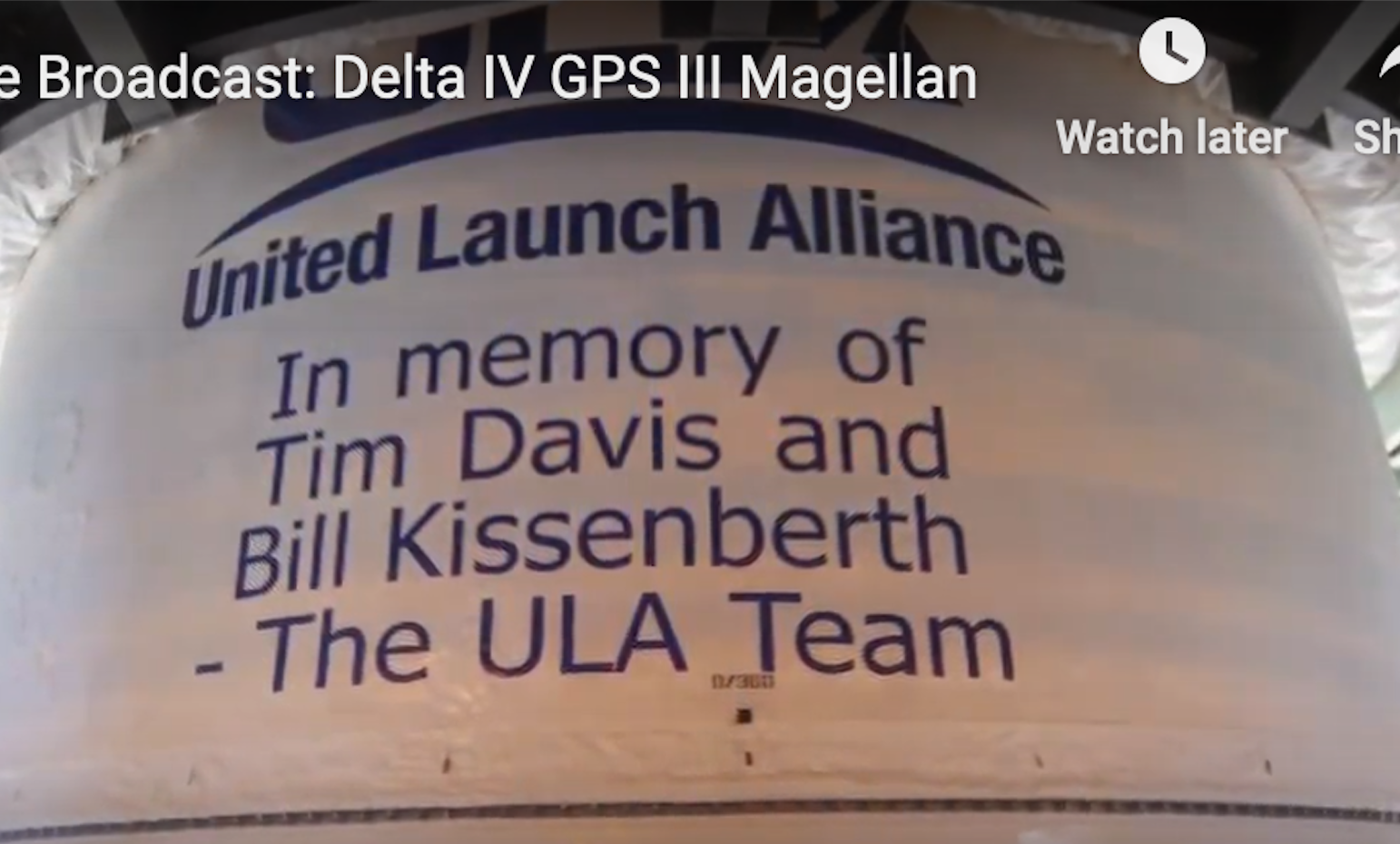
August 22 06:09 — T+plus 3 minutes. Now approaching Mach 10. The Aerojet Rocketdyne RS-68A main engine continues to perform well, burning liquid hydrogen and liquid oxygen propellant at a rate of nearly 2,000 pounds per second to push the rocket closer to space.
August 22 06:09 — T+plus 3 minutes, 40 seconds. Passing Mach 15, the first stage remains in the full power mode. We are coming up on throttle down to the minimum power setting just prior to shutdown and staging.
August 22 06:10 — T+plus 4 minutes, 30 seconds. Successful staging and ignition of the Delta Cryogenic Second Stage is confirmed as well as jettison of the payload fairing.
The common booster core first stage completed its burn and then separated, allowing the RL10B-2 engine to deploy its nozzle and begin its first of two burns during the launch to send Magellan towards the GPS constellation to improve global navigation.
The Delta IV rocket now weighs about 9 percent of its liftoff weight.
August 22 06:12 — T+plus 6 minutes. The RL10B-2 engine is performing well with good operating parameters reported. This first burn by the Delta Cryogenic Second Stage will last a little more than 9 minutes to place the vehicle into an initial parking orbit around the Earth.
August 22 06:13 — T+plus 7 minutes. A look at first stage performance numbers show a nominal burn by the common booster core.
August 22 06:15 — T+plus 9 minutes. We continue to follow a nominal trajectory as the second stage fires to reach orbit. The Delta IV rocket has leveled off from its steep climb in order to gain speed for orbital insertion.
August 22 06:16 — T+plus 10 minutes, 30 seconds. Now 10 minutes since leaving the launch pad back at Cape Canaveral. Systems continue to function well on the Delta Cryogenic Second Stage with good data reported from the RL10B-2 engine.
August 22 06:17 — T+plus 11 minutes. Velocity now 15,600 mph. The second stage of the Delta IV rocket continues firing to obtain orbital velocity, burning liquid hydrogen and liquid oxygen propellants.
August 22 06:17 — T+plus 11 minutes, 30 seconds. About two minutes remain in this initial burn by the Delta Cryogenic Second Stage.
August 22 06:19 — T+plus 13 minutes, 5 seconds. The vehicle has obtained orbital velocity.
T+plus 13 minutes, 35 seconds. The first main engine cutoff (MECO 1) on the Delta Cryogenic Second Stage is confirmed, completing the first of two burns during today's launch sequence for the Air Force Space and Missile Systems Center's Global Positioning System III SV02 Magellan satellite. The vehicle has reached a preliminary Earth orbit where it will coast for the next 53 minutes before the second burn begins.

